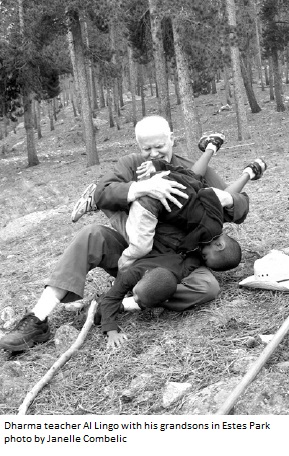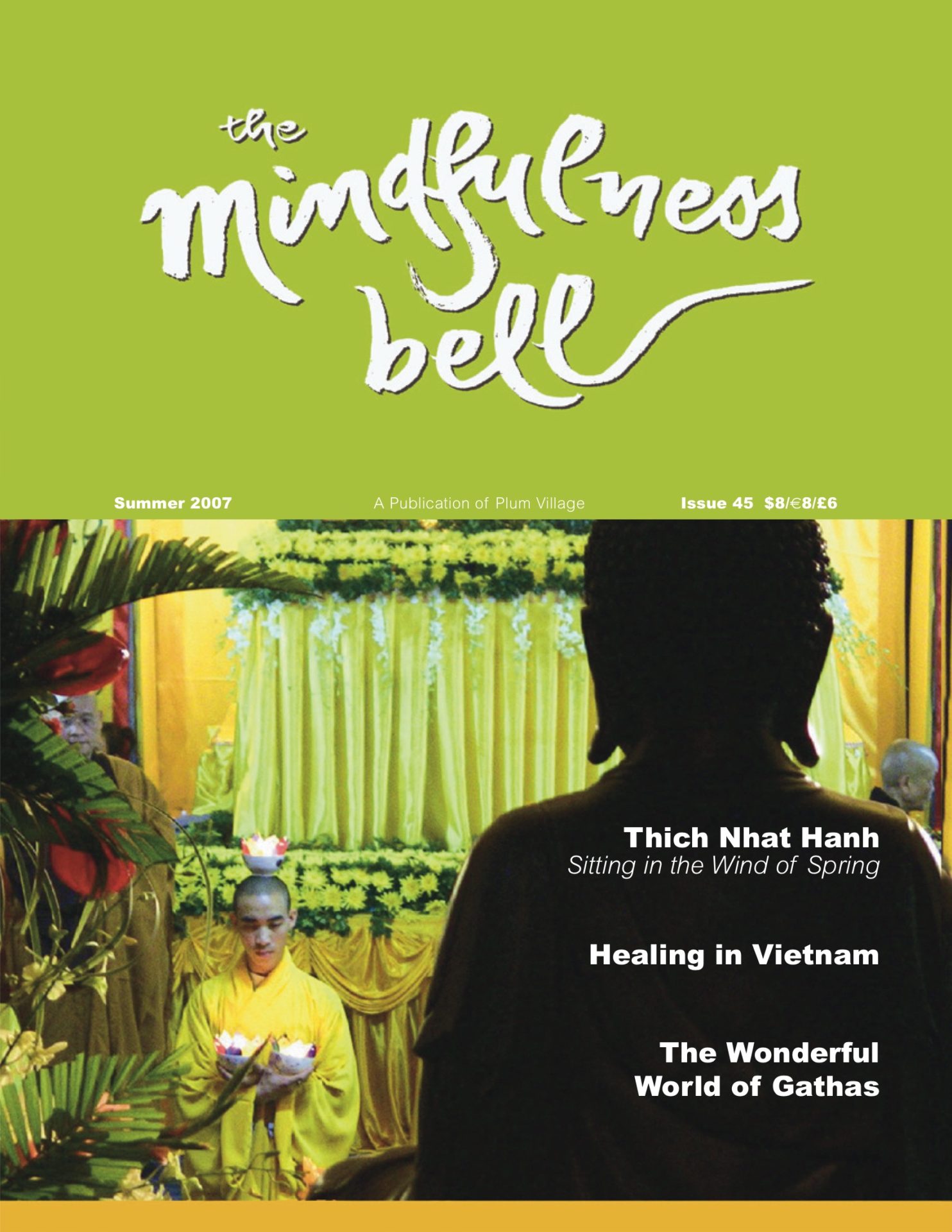
By David Hughes
I’ve always viewed myself as a hugger, a toucher. I hug my family members, and like to be hugged. I touch a lot — I’ll walk by my wife and touch her shoulder, or reach over and touch my daughter’s arm. My Dad was like this, too. Touching is good; hugging is better. In the workplace, I’m conscious of this tendency, and I have to pay attention to make sure that I curb the impulse to touch lest it be considered inappropriate.

By David Hughes
I’ve always viewed myself as a hugger, a toucher. I hug my family members, and like to be hugged. I touch a lot — I’ll walk by my wife and touch her shoulder, or reach over and touch my daughter’s arm. My Dad was like this, too. Touching is good; hugging is better. In the workplace, I’m conscious of this tendency, and I have to pay attention to make sure that I curb the impulse to touch lest it be considered inappropriate. I know that many people don’t want to be touched, or at least don’t want to be touched except by a carefully chosen small group of people close to them. But I’ve always thought of myself as a person who likes hugging and touching.
So it should come as no surprise that I had a very positive reaction when I first encountered my spiritual leader’s teachings on hugging and hugging meditation. Thich Nhat Hanh has done for hugging what he has done for so many other activities of daily life — transformed the ordinary into the sacred. Thay tells a very funny story of his first visit to the United States, and being given a great big hug of welcome by a large woman. When he describes how truly “foreign” this experience was for him, you can actually feel it. In his culture, people don’t hug very much; people simply don’t hug Zen masters; women don’t even touch monks. Thay confesses to having been taken aback by this enthusiastic hug — but in typical Thich Nhat Hanh fashion, he doesn’t simply leave it at that. Looking deeply at the hugging experience, he recognized how wonderful and positive this practice was at its core. He developed Mindful Hugging as a means of deepening one’s dharma practice.
Three Simple Breaths
Thay suggests that before actually hugging, we take a couple of breaths to bring ourselves fully into the present moment, so that we can really be there for the person we are about to hug. As we then embrace, we breathe in deeply, and on the first in-breath we say to ourselves: breathing in, I am aware that you are alive and in my arms; breathing out, I am so happy. On the second in-breath, we say: breathing in, I know that I am alive and in your arms; breathing out, I am so happy. And finally, a third breath: breathing in, I am aware that we are both alive right now and embraced in each others’ arms; breathing out, I am very happy.
Three simple breaths, three simple gathas. A simple practice that anyone can do at any time. Sounds really easy, doesn’t it? But have you tried it? I have, and I have found that this practice brings up a whole lot of stuff from deep within me — stuff that may be hard-wired into me as a male, or acquired from the culture in which I have lived, or even cultivated by me over the years as a part of my professional and social persona. In short, it’s a deep and profound practice.

Sitting here at my keyboard, I find that taking three long breaths takes a total of about thirty seconds. Standing around after a sangha hugging discussion and actually practicing a single three-breath hugging meditation, I found that it took about an hour! Or so it seemed. Ten seconds for a preparatory breath to be sure I am fully present, the arms around one another, and an hour later I finish with my third breath and release. What’s up with that? Of course, I am more used to the perfunctory tap on the arm, to the quickie social hugging that one gives and gets as a good-night or a good-bye, or a greeting for an old friend. This three-breath, mindful hug is intense! I truly am fully present, and the experience of it is powerful. The urge to break off after that first breath — or even sooner — is palpable. By the second breath, if I stick with it, I know that I am experiencing something very different. And as that third breath rises and falls, I feel the presence of myself and the presence of my friend, alive, real, physical, and very intimate.
Intimate, Intense, Physical
Ah, maybe that’s the real issue. Aside from being the longest thirty seconds in history, it is really intimate. So up comes all of my psychological conditioning about intimacy, about sexuality, about appearances and image. This experience doesn’t fit neatly into any of my pre-existing boxes; it’s out of my comfort zone. This is an intimate, intense, and physical experience with someone who is not my spouse, who is not my daughter or my mother. Do I ever hug my daughters or my mother in such an intense way? Is this sort of physicality reserved exclusively for my wife? Do we as mates even hug this intensely, this intimately?
The friend I hug at sangha is a male, as am I. Two heterosexual males both well over 50. Is this hugging sexual? Does he think it is? Do others, watching, see it as such? Intimate, intense, physical—does that make it sexual? Can I experience those three things all together without also being sexual? Can he? Is this what’s behind the urge to break off the hug prematurely?
Later that evening, after giving another sangha friend a ride, we give each other a hug in my car. I break it off fast. And she confronts me. What’s going on; what happened to the mindful hugging? Again, questions of conditioning, sexuality, and appearance come up strongly. Can I hug a woman so intimately, so meaningfully, without the stereotypical sexual overtones? I can almost hear Billy Crystal’s diatribe in When Harry Met Sally about all relations between a man and a woman being fundamentally sexual. But I have had female friends all of my life, non-sexual friends. I don’t restrict my contact with women, or my concept of women, to the realm of sexuality.
But there it is. I recoil from a deep, close, meaningful hug with a female friend even more abruptly than with my male friend.
The Gift of Being Fully Alive
To hug like this also demands trust. I am vulnerable in this openness. My intentions may be misconstrued. What are my intentions, really? Is this hug in any way in conflict with my commitments, with the third of the Five Mindfulness Trainings? Am I doing this for show? To prove my practice to myself or others? And what about him/her? Where is she coming from? What is his experience right now? Is he thinking something negative about me?
I now see hugging as a very powerful exercise in the context of a committed dharma practice. Mindful hugging, hugging that brings us fully into the present moment, is an extremely skillful means of focusing on our aliveness in all of its glory, with all its wrinkles, its hang-ups, its beauty. It is a practice, not a concept. To take 30 seconds to be fully and completely present with one another is to touch deeply our life right here and right now. We are fully alive. We have bodies. We have texture, we have smells, we have sounds.
Ultimately, it seems to me that this is a deep practice of letting go. Letting go of concepts, of conditioning. Letting go of fears, letting go of the impulse for security. Letting go and just experiencing — fully experiencing — the present moment, the wonder of this precious human birth.

David Hughes, Committed Direction of the Heart, is a member of Open Heart Sangha in Yarmouth, Maine, and an aspirant to receive the Fourteen Mindfulness Trainings.

